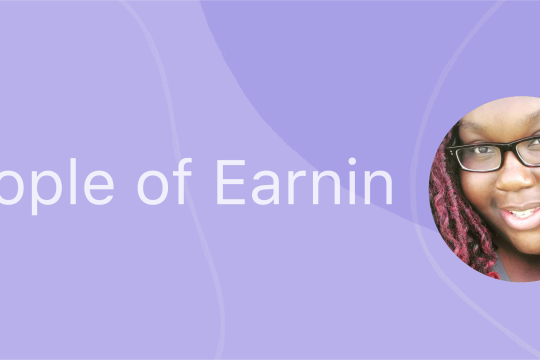There’s a reason why some people are really good at saving and growing their money while others struggle with overspending: it’s called a money mindset. Your mindset about money influences how you save, spend, and organize your finances, and it can lead to either good or bad outcomes.
If you have difficulty managing money, the good news is that adopting positive money beliefs can change your money mindset and create financial stability. With this guide, you’ll learn what a money mindset is, how it affects your decision-making, and what steps you can take to reshape your relationship with money to achieve your financial goals.
What is a money mindset?
A money mindset is your attitude and beliefs about money, including how you think about earning, spending, and investing. This perspective influences your financial decisions and can be the difference between growing your money or overspending.
While a positive mindset leads to positive money choices, a negative money mindset rooted in fear or anxiety can lead to money mismanagement. For example, someone who’s gone through financial struggles in the past might feel anxious about facing their current money situation and make impulsive financial decisions instead.
How do you form a money mindset?
Money mindsets develop over time, but they often begin to form in childhood and shift as your world experiences change. Here are a few factors that play a role in shaping this mindset:
-Your upbringing, including how your parents or guardians discussed or managed money. For instance, some families may openly discuss their finances, while others may keep money matters private from children.
-Your experience with earning or receiving money, like whether you held a job early in life or were given an allowance.
-Different cultural and social experiences, like the cost of living where you reside or the way your social circle approaches spending and saving.
These positive or negative experiences with money result in a matching outlook on the role of money in your life. For example, people who were taught to view money as scarce may feel less hopeful about their potential to grow their wealth, while people who learned how to save at a younger age may have more confidence in how they save their money.
The important thing to know is that your mindset isn’t set in stone and can change if you choose to challenge negative beliefs and seek out positive experiences.
How does your money mindset impact your financial goals?
Your financial mindset can either fuel or steal your motivation to properly manage your money. If you have a positive attitude about finances, you may believe ambitious goals are achievable, like saving for a car or a down payment on a house. Meanwhile, if you have a negative mindset about money, you may limit your goals or hold the belief that some goals aren’t worth setting.
This mindset directly affects your decision-making and financial behaviors, too. If you don’t think you can save, you’re more likely to spend money on items you don’t need or avoid pursuing opportunities that could increase your earning potential. But if you have clear goals and believe you can achieve them, you’ll likely feel more confident managing your money and making choices that help you attain maximum earnings.
How to change your mindset about money in 9 steps
Changing your money mindset requires planning and dedication. If you’re ready to adopt a new outlook, here are nine steps you can take:
1. Acknowledge that you’re in control
Your financial situation is your responsibility, and only you have the power to make the decisions to improve it.
2. Seek out additional knowledge, resources, and support
There are many educational materials, classes, and support groups available to teach you to manage your money and outline your goals. Taking time to learn about your personal finances, budgeting, and wealth-building strategies can give you the information and confidence you need to begin taking steps toward your goals.
3. Track your progress
Whether you set short-term goals, like paying off a single credit card or long-term goals, like saving for a new car, make note of your progress along the way. Visualizing this, especially with a financial planning checklist or budgeting spreadsheet, can help you keep your motivation to reach the finish line.
4. Recognize your emotions and perspectives on money
Pay attention to your thoughts and feelings about money. If you feel anxiety or fear when you think about your finances, look at what’s triggering those feelings and what the origin might be. Identifying them and finding the root cause is the first step to changing those beliefs.
5. Let go of limiting beliefs
Holding on to limiting beliefs can hamper your success with money. If you were taught to believe that money is scarce, repeat to yourself that there are abundant opportunities to earn money. You can even reinforce that new perspective by seeking out new opportunities — like a high-yield savings account or a side hustle.
6. Work on developing positive habits
Tackling small habits first can lead to bigger changes over time. This might start with skipping takeout once a week and putting that money in your savings instead or pushing yourself to wait a week before making a purchase in an effort to practice mindful spending. Little by little, you can create healthy habits that help you save or spend your money wisely.
7. Create your budget and commit
Outline what’s reasonable for you to save after you pay for expenses like monthly bills and basic necessities. Once you land on a number, stick to it. Don’t let up on your progress, and watch for negative beliefs that might knock you off target. Focus your attention on what you’ll gain from achieving your goal(s).
8. Understand that life happens
Everyone experiences financial hurdles and money-saving challenges, but they shouldn’t stop you from achieving your goals. If you’ve made some missteps or encounter an unexpected expense that throws a wrench in your plans, don’t feel discouraged what you can’t change. Instead, make the necessary adjustments and focus on what you can do to get back on track.
9. Don’t be afraid to seek help
If you’re having difficulty taking these steps on your own, there are plenty of support groups and financial professionals to guide you through financial challenges. See if your bank or employer gives you access to a financial advisor or if there’s someone you can talk to about improving your financial situation.
Abundance mindset versus scarcity mindset
Money-related mindsets, good and bad, use two terms: abundance versus scarcity. Here are the key differences between these mindsets:
| Abundance Mindset | Scarcity Mindset |
|---|---|
| Feel confident, positive, and motivated to grow | Experience fear, anxiety, and demotivation |
| See yourself as in control | Feel a lack of control |
| Continually move forward and tackle tasks head-on | Procrastinate on goals and stall progress |
| Choose to learn and improve, seeking out new resources | Feel easily defeated and give up before you even begin the work |
| Take it one day at a time, seeking little wins | Make impulsive or short-sighted spending decisions that don’t support growth |
If you have a scarcity mindset, your thoughts and actions limit opportunities and continue to foster negative feelings. But working toward adopting an abundance mindset builds more comfort with trying new opportunities and being more resourceful, which can help you attract more wealth. The key is to start small and celebrate the small wins. Eventually, those wins will grow, and you’ll see amazing and exponential financial growth.
Cultivate financial harmony in your life with EarnIn
Changing your mindset can be a tough journey, but having the right tools and resources can help. With the EarnIn app, you can take control of your money and feel more empowered about your finances.
If you’re looking to manage your spending on your terms and avoid payment methods that can add to your debt, our Cash Out tool lets you access your pay as you work — not days or weeks later. You can get up to $100 a day and up to $750 every pay period with no credit checks, no interest, and no mandatory fees. This can help you handle unexpected and day-to-day expenses, giving you the flexibility to take on challenges and reach your goals.
For more helpful tools and a wealth of financial resources to help you gain a new positive outlook on money, download EarnIn today.
You may enjoy












EarnIn is a financial technology company not a bank. Subject to your available earnings, Daily Max and Pay Period Max. EarnIn does not charge interest on Cash Outs. EarnIn does not charge hidden fees for use of its services. Restrictions and/or third party fees may apply. EarnIn services may not be available in all states. For more info visit earnin.com/TOS.






